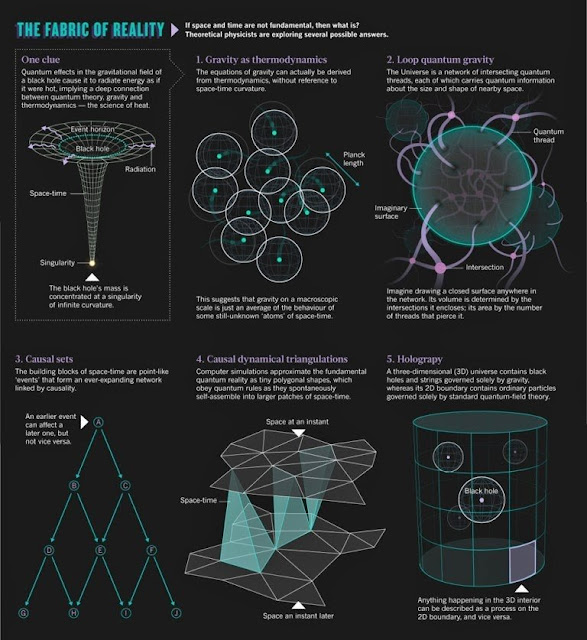Expansion And Contraction of (Big Bounce) Theory
Expansion and contraction
The concept of the Big Bounce envisions the Big Bang as the beginning of a period of expansion that followed a period of contraction. In this view, one could talk of a Big Crunch followed by a Big Bang, or more simply, a Big Bounce. This suggests that we could be living at any point in an infinite sequence of universes, or conversely the current universe could be the very first iteration. However, if the condition of the interval phase "between bounces", considered the 'hypothesis of the primeval atom', is taken into full contingency such enumeration may be meaningless because that condition could represent a singularity in time at each instance, if such perpetual return was absolute and undifferentiated.
The main idea behind the quantum theory of a Big Bounce is that, as density approaches infinity, the behavior of the quantum foam changes. All the so-called fundamental physical constants, including the speed of light in a vacuum, need not remain constant during a Big Crunch, especially in the time interval smaller than that in which measurement may never be possible (one unit of Planck time, roughly 10−43 seconds) spanning or bracketing the point of inflection.
If the fundamental physical constants were determined in a quantum-mechanical manner during the Big Crunch, then their apparently inexplicable values in this universe would not be so surprising, it being understood here that a universe is that which exists between a Big Bang and its Big Crunch.
The Big Bounce Models, however do not explain much about that how the currently expanding universe will manage to contract. This constant and steady expansion is explained by NASA through the metric expansion of space.




Comments
Post a Comment